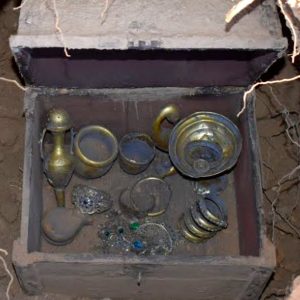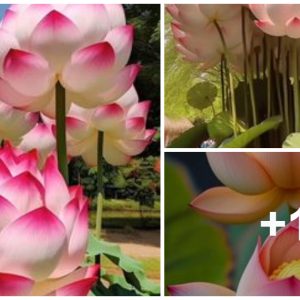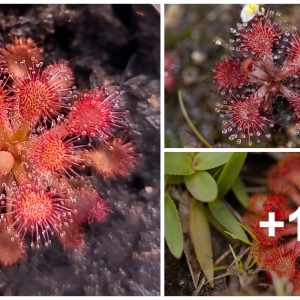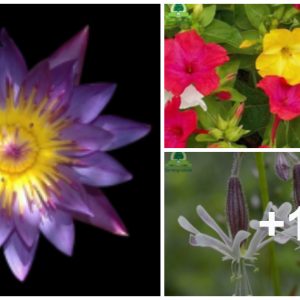
California is known for its tough droughts and growing seasons. State laws often regulate the watering of plants that can ruin the landscaping of your property.
Luckily many native plants thrive in the harsh growing conditions in California. Plants need to survive on minimal water, high sun, dry soils, and harsh temperatures to flourish in California.
Below, we’ve highlighted 12 California drought-tolerant plants for your property.
Matilija Poppy (Romneya Coulteri)

Native to southern California and the Baja Peninsula, this poppy flowering plant grows naturally in dry canyons and coastal scrub plant communities.
The matilija poppy is a large shrub that can grow to over two meters high and has a large white flower with six petals. Matilija poppy plants can grow quickly during spring and summer and may require pruning to prevent unwanted expansion. They are effortless to care for, requiring full sun, low moisture, and sandy soil with fast drainage.
California Wild Rose (Rosa California)

The California wild rose is a shrub that can grow up to ten feet tall. You can find these plants growing naturally in the foothills, coast, and mountains of California.
This shrub produces a fragrant red, pink and white flower with five petals that can grow as singles or in blooms. California wild rose shrubs are great at surviving droughts and can survive in low temperatures and full shade. The wild rose prefers to grow in moist soil but can survive in dry clay soils.
Western Redbud (Cercis Occidentalis)

The western redbud is a popular shrub for use in hummingbird gardens and bee gardens. This shrub is common in the higher elevations in California and can be found near creeks and canyon bottoms.
This colorful shrub features heart-shaped leaves that transform from light green to dark later in the season. It also blossoms with pink, yellow, and red flowers during the winter and spring seasons. The western redbud prefers shade, moderate temperatures and needs minimal irrigation to survive and bloom.
California Poppy (Eschscholzia Californica)

The California poppy is a fast-growing, self-seeding plant that can survive any drought. As the official state flower of California, you can find the California poppy growing in open areas, sea level, and high altitudes.
This perennial and annual herb produces terrific orange and yellow flowers during every season. They love being in the sun and require little water to survive in California’s arid environment.
Lemonade Berry (Rhus Integrifolia)

The lemonade berry is an evergreen shrub that can grow up to 30 feet tall and 20 feet wide. It is native to coastal canyons and hillsides in California.
The shrub produces red fruit and produces red or pink flowers during winter and spring. The berries of the lemonade berry provide an essential food source to local wildlife.
Lemonade berry bushes will thrive in partial shade or full sun. They require minimal moisture and can grow in almost any soil type in California.
California Lilac (Ceanothus spp)

If you need a flower for your coastal home, the California lilac is one of the best. This shrub will grow in coarse-grain sand and prefers plenty of sunlight.
The California lilac is a smaller plant that will grow 2-4 feet tall. It produces a blue flower in winters and is evergreen. California lilacs thrive in full sun, part shade, and low moisture. They also prefer fast-draining soil, making them ideal for beach plants.
Pacific Dogwood (Cornus nuttallii)

The Pacific dogwood is an ideal plant for homeowners in Northern California. It can easily survive colder temperatures, droughts, partial shade, and fast-draining soil.
This shrub can grow up to 65 feet tall and 30 feet wide. It features a large white flower that can grow up to 7 cm per petal. Pacific dogwood also grows a pink-red berry that is edible but not that tasty.
Blue Field Gilia (Gilia Capitata)

This annual herb produces 50 to 100 small flowers per plant and grows to approximately three feet tall. You can expect a variety of blue, lavender, pink, or white flowers during winter and spring flowering seasons from your blue field gilia plants.
Blue field gilia plants should be planted in full sun with medium to fast soil drainage. Native to most of North America, this plant can tolerate extreme colds as low as -20 F.
Chalk Liveforever (Dudleya pulverulenta)

This succulent is native to the southwestern United States and flourishes in rocky areas, inland mountains, and deserts. Easy to grow, chalk liveforever plants require little water, fast soil drainage, and warmer temperatures.
The plant features a beautiful variety of orange, pink, and red flowers during the spring and summer. Their moderate growth rate and minimal care make chalk liveforever plants ideal for anyone that doesn’t have time to care for their land.
Desert Mallow (Sphaeralcea Ambigua)

The desert mallow is a perennial herb that thrives in full sun. It requires extremely low amounts of water and prefers fast drawing sands and desert soil. They are extremely easy to care for as well, making them ideal for your home landscape.
These plants may grow up to five feet tall and four feet wide. The flowering season is spring and winter. You can expect a range of colors from the flowers of a desert mallow plant, including orange, lavender, red, and pink.
Hummingbird Sage (Salvia Spathacea)

If you have shady areas on your property, the hummingbird sage is an excellent option for your landscaping. This perennial herb thrives in full shade, low moisture, medium drainage, and can tolerate temperatures as low as 0 F.
Hummingbird sage is an evergreen plant and blooms in the winter, spring, and summer. You should expect red and pink flowers from your plant and growth up to three feet tall and three feet wide.
Catalina Mariposa Lily (Calochortus Catalinae)

Catalina mariposa lily is native to southern California and thrives in low water and full sun locations.
A perennial herb, Catalina mariposa lily can grow up to two feet tall and features white, pink, purple, and red flowers during bloom.
Conclusion
As you can see, there are several varieties of plants to choose from that are easy to grow and maintain in California. Any one of these would be a simple way to add more green to your garden.






